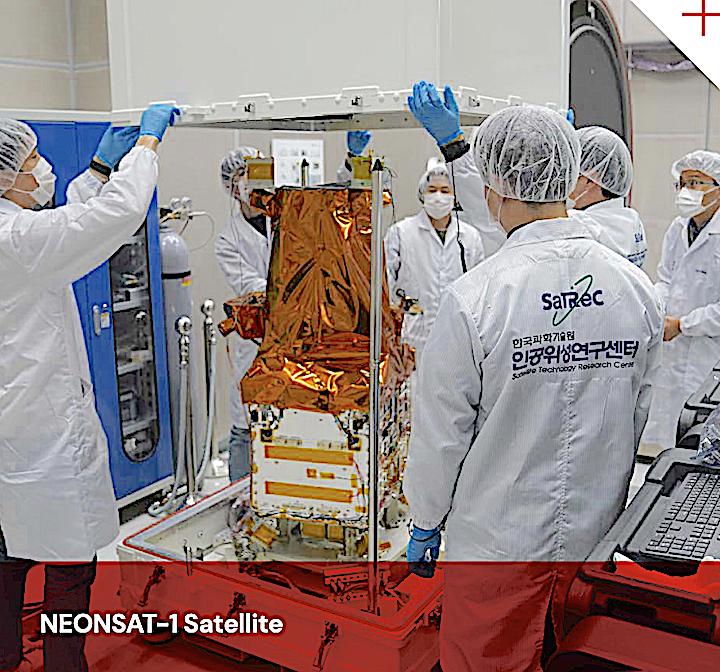
The ‘Beginning Of The Swarm’ mission is scheduled to launch from Rocket Lab Launch Complex 1 in Mahia, New Zealand during a 14-day launch window that opens on April 24th. Electron will carry two satellites for two separate customers: NEONSAT-1, an Earth observation satellite for the Satellite Technology Research Center (SaTReC) at the Korea Advanced Institute of Science and Technology (KAIST), and NASA’s Advanced Composite Solar Sail System (ACS3).
The primary payload for this mission, NEONSAT-1, is an Earth observation satellite with a high-resolution optical camera designed to monitor for natural disasters along the Korean Peninsula by pairing its images with artificial intelligence.
NEONSAT-1 is the first satellite developed under the NEONSAT program by SaTReC and KAIST, Korea’s leading university in science and technology, which developed and operated Korea’s very first satellite KITSAT-1 more than 30 years ago. Other NEONSAT satellites are planned to be launched in 2026 and 2027 to build out the NEONSAT constellation.
The secondary payload is NASA’s ACS3, a technology demonstration of new materials and deployable structures for solar sail propulsion systems that use sunlight to propel the spacecraft. Much like a sailboat is powered by wind pushing against a sail, solar sails employ the pressure of sunlight for propulsion, eliminating the need for conventional rocket propellant.
The mission plans to test the deployment of new composite booms that will unfurl the solar sail to measure approximately 30 feet per side, or about the size of a small apartment in total. Flight data obtained during the demonstration will be used for designing future larger-scale composite solar sail systems for space weather early warning satellites, asteroid and other small body reconnaissance missions, and missions to observe the polar regions of the sun.
NASA’s Advanced Composite Solar Sail System (ACS3) is a technology demonstration mission tasked with deploying a composite boom solar sail.
NeonSat-1 is a high-resolution optical satellite by South Korea’s KAIST that will be deployed as a technology demonstration for a planned future Earth observation constellation.